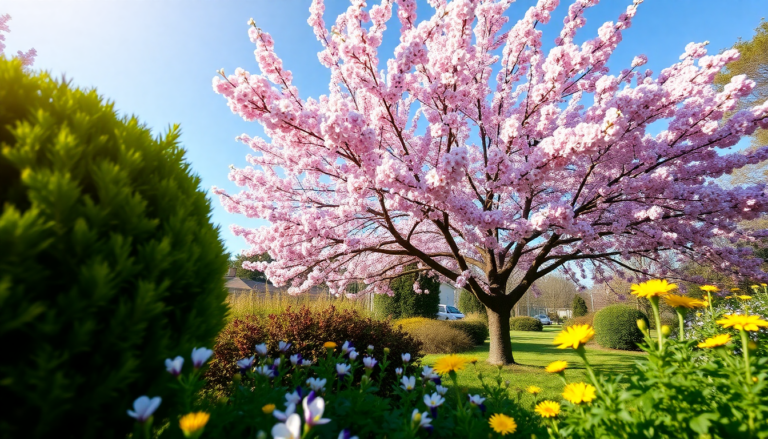Argomenti trattati
Why choose pink flowering trees?
When it comes to landscaping, many people focus on ground-level plants and colorful flower beds. However, incorporating pink flowering trees can elevate your garden’s aesthetic and provide numerous benefits. Not only do these trees bring stunning visual appeal, but they also contribute to the ecosystem by offering shade, improving air quality, and providing food and habitat for wildlife.
Kristin Monji, a renowned landscape designer, emphasizes the dual advantages of flowering trees, stating they serve both as beautiful focal points and essential components of the environment. They play a critical role in supporting pollinators and enhancing curb appeal, making them an excellent choice for homeowners and gardeners alike.
Choosing the right pink flowering tree
When selecting a pink flowering tree, it’s crucial to consider your local climate and the specific USDA Hardiness Zone. This ensures that your chosen tree can thrive in your area. Additionally, it’s essential to pay attention to the mature size of the tree. Although a young tree in a small pot may seem insignificant now, it could grow considerably over time.
Monji suggests looking into the bloom times of various trees to ensure a continuous display of flowers throughout the seasons. Trees like the crape myrtle, known for its vibrant pink blooms in late summer, are a fantastic choice for adding color when other flowers may have faded.
Planting and caring for your pink flowering tree
To successfully plant a pink flowering tree, start by digging a hole that is two to three times wider than the tree’s container and the same depth. Ensure the tree is planted at the same depth as it was in its pot. If your tree arrives balled and burlapped, remove any burlap, string, or wire to allow the roots to grow freely.
After placing the tree in the hole, backfill with soil, firming it down to remove air pockets, and water thoroughly. During the first growing season, it’s vital to keep the soil consistently moist to establish a robust root system. Avoid adding compost or amendments to the planting hole, as this can create drainage problems. Instead, allow your tree to adapt to the native soil.
Stunning pink flowering trees to consider
Here’s a selection of beautiful pink flowering trees that can enhance your garden:
- Wisteria: Known for its cascading flowers, this climber needs support to thrive.
- Pink oleander: This drought-resistant tree blooms in cone-shaped flowers and is perfect for warmer climates.
- Peach tree: Not only does this tree produce delicious fruit, but it also showcases lovely pink blooms in spring.
- Cherry blossom: Famous for its breathtaking spring display, this tree is a must-have for any garden.
- Mimosa tree: Unique with fern-like foliage, this tree requires ample space to grow.
- Pink trumpet tree: This tree thrives in warm climates and blooms in winter, attracting pollinators.
- Gala apple tree: Featuring beautiful blossoms that turn into sweet fruit, this tree is a delightful addition.
- Pink flowering almond tree: This ornamental tree is prized for its double blooms.
- Red horse chestnut: A hybrid tree that starts with red flowers that turn pink.
- Redbud tree: One of the first trees to bloom in spring, offering lovely hot pink flowers.
- Southern magnolia: This classic tree has various types that grow well in different climates.
- Weeping cherry: This elegant tree offers stunning blooms and vibrant fall colors.
- Camellias: Known for their classic beauty, these plants bloom from late fall to early spring.
- Crabapple tree: With lush pink blooms and tasty berries, this tree attracts birds.
- Crape myrtle: These trees are known for their continuous summer blooms in various shades of pink.
Enhancing your landscape with pink flowering trees
Incorporating pink flowering trees into your garden not only adds stunning visual elements, but it also enhances your outdoor environment and contributes positively to local wildlife. Whether you choose a towering magnolia or a charming cherry blossom, each tree brings its unique beauty and charm to your landscape.
As you consider adding these trees to your yard, think about how they can complement existing plants and structures. The right tree can transform your space, making it a delightful retreat for you and a welcoming sight for passersby.

